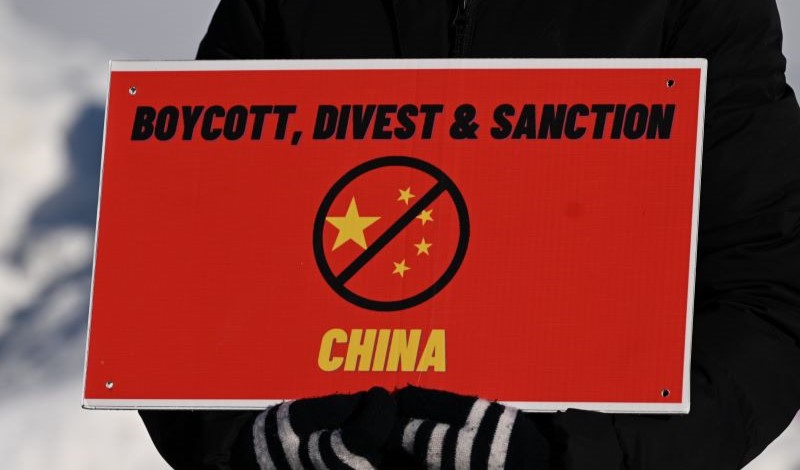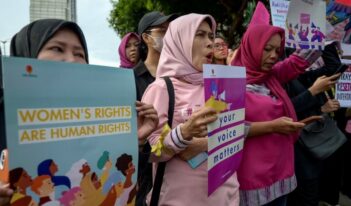
Scholars assess the effectiveness and impact of rights-based sanctions.
In today’s interconnected world, economic and financial sanctions have emerged as essential tools for holding individuals and states accountable for human rights abuses and corruption.
One such framework is the Magnitsky sanctions, named after Sergei Magnitsky, a Russian lawyer and auditor who died in a Moscow prison in 2009 after reporting on corruption in the Russian government. In response, the U.S. Congress passed the Sergei Magnitsky Rule of Law Accountability Act in 2012, allowing targeted sanctions against specific individuals and entities involved in human rights violations. Unlike broad economic sanctions, these measures enable to more precise punitive measures, such as asset freezes and visa bans on specific perpetrators.
The United States imposed additional sanctions following Russia’s annexation of Crimea in 2014 and its full-scale invasion of Ukraine in early 2022. The Russian government responded with countermeasures, including banning U.S. officials from entering the country and enacting its own blacklist.
Initially applied to Russia, U.S. Congress has since expanded the Magnitsky sanctions framework to other countries.
For example, the United States has targeted China with Magnitsky-style sanctions, and at least two high-ranking Chinese officials have been sanctioned for human rights violations in Xinjiang against the Uyghur population. In 2020, the U.S. Congress reinforced these efforts with the Uyghur Human Rights Policy Act, following President Donald J. Trump’s Executive Order 13818. Chen Quanguo, a former Communist Party secretary of Xinjiang linked to mass surveillance and forced labor, became the highest-ranking Chinese official sanctioned by the United States. The Magnitsky sanctions have contributed to growing diplomatic tensions and economic consequences for Chinese entities.
Magnitsky sanctions have also been applied to Taliban-linked figures in Afghanistan, corrupt high-level officials in Bulgaria and Paraguay, and individuals accused of extrajudicial killings in Haiti. In 2016, the U.S. Congress enacted the Global Magnitsky Human Rights Accountability Act, allowing sanctions against individuals worldwide for human rights abuses and corruption. Since then, numerous other countries and international bodies, such as the European Union, have adopted similar legal frameworks.
Enforcement, however, remains a challenge. Some scholars have argued that sanctions may inadvertently exacerbate the violation of human rights. Sanctioned individuals have been known to use offshore accounts, shell companies, and alternative financial systems to bypass restrictions.
Furthermore, the political will to implement and maintain these sanctions varies. While the United States, United Kingdom, and Canada have been proactive, some European nations such as Hungary have been hesitant to enforce sanctions against Russia.
In this week’s Saturday Seminar, scholars discuss Magnitsky sanctions, their impact, and potential drawbacks.
- In an article in Genocide Studies and Prevention: An International Journal, Yifan Jia, PhD candidate at the Dickson Poon School of Law at King’s College London, analyzes how Magnitsky sanctions can be applied to perpetrators of mass atrocities. To deter mass atrocities, Jia argues that adopting Magnitsky sanctions in various countries strengthens the enforcement of human rights law, addressing gaps left by states that opt out of the International Criminal Court or fail to implement their own human rights laws. Jia highlights that Magnitsky sanctions can be triggered by a single instance of extrajudicial murder or torture, serving as a tool to prevent further human rights violations.
- In an article in Journal of Peace Research, Barış Arı of the United Kingdom’s University of East Anglia and Burak Sonmez of University College London discuss the role of public pressure in shaping sanctions policy. Arı and Sonmez observe how support for sanctions is influenced by how the human rights violations are framed and which human rights are purported to have been violated. Arı and Sonmez also demonstrate that the public shows a limited willingness to bear economic costs for protecting civilians in the event that the targeted sanctions have unforeseen spillover effects. Ari and Sonmez highlight that multilateral coordination strengthens the legitimacy of sactions, as joint action with other countries increases credibility and tends to foster greater public approval.
- In a recent article in the German Law Journal, Anton Moiseienko of the Australian National University Law School examines the role of targeted sanctions as instruments of criminal justice. Moiseienko argues that governments increasingly use sanctions to address crimes such as corruption, human rights abuses, cybercrime, and drug trafficking. He challenges the common notion that sanctions primarily aim to change behavior, suggesting instead that they serve punitive and disruptive functions—particularly in cases where traditional criminal justice measures are ineffective due to impunity. Moiseienko recommends implementing a civil standard of proof for crime-based sanctions through legislative provision. He concludes that governments should normalize crime-based sanctions as criminal justice measures with principles ensuring consistency, integrity, and credibility in their application.
- In an article published by Intersentia, Iryna Bogdanova, a researcher at the World Trade Institute, examines the complex relationship between human rights and unilateral economic sanctions. Bogdanova highlights the tension between states that view sanctions as a tool to promote human rights compliance and those that condemn them as violations of human rights. Bogdanova argues that policymakers should adopt a more nuanced approach that establishes clear procedural and substantive prerequisites for the legitimate use of economic sanctions in human rights enforcement. She suggests potential reforms such as incorporating mandatory humanitarian exceptions in sanctions regimes and improving coordination between states on best practices. Bogdanova concludes that states should ensure sanctions genuinely protect human rights and minimize unintended humanitarian consequences.
- In an article in the Brown Journal of World Affairs, practitioner Mark Ferullo argues that the Global Magnitsky Sanctions Program represents a fundamental departure from the traditional use of sanctions as tools to deter national security threats and ongoing violations of international law. Ferullo contends that because “accountability sanctions” like Magnitsky Sanctions function retroactively, targeting past abuses rather than ongoing threats, they impose extraterritorial retributive justice. Ferullo maintains that Just War Theory—long the ethical framework invoked to justify sanctions—cannot justify sanctions levied without ongoing threats. Instead, Ferullo calls for an alternative source of normative guidance: a cosmopolitan ethical framework prioritizing universal human rights over state sovereignty and providing clear principles for implementing accountability sanctions.
- In a recent article in the UCLA Journal of International Law and Foreign Affairs, practitioner Giulia Spaggiari argues that economic sanctions often fail as an anti-corruption tool and may foster—rather than curb—corruption. She explains that broad trade restrictions drive economic activity underground, strengthening illicit networks and incentivizing rent-seeking behavior. Even targeted sanctions designed to minimize collateral damage, Spaggiari argues, can inadvertently entrench corruption by compelling governments to reward sanctioned elites with state contracts. Spaggiari emphasizes the need for harmonized global sanctions regimes, stronger beneficial ownership laws, and clearer asset recovery mechanisms to prevent sanctioned individuals from evading restrictions. Without such reforms, she warns, sanctions may remain a “corruption super spreader” rather than a solution.
The Saturday Seminar is a weekly feature that aims to put into written form the kind of content that would be conveyed in a live seminar involving regulatory experts. Each week, The Regulatory Review publishes a brief overview of a selected regulatory topic and then distills recent research and scholarly writing on that topic.



